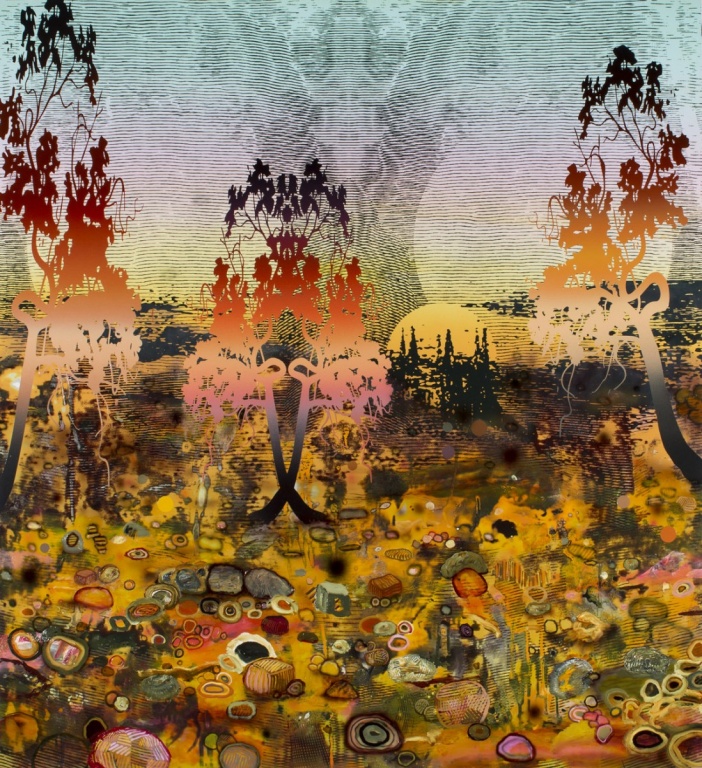A Rocky Shore
Last year I joined my partner in her project to walk the shoreline of Tasmania. I can measure this journey in months, weeks, days and hours. I can measure it in kilometres walked and in footsteps. I have geotagged photographs that show a precise location and the exact time of day. It is a highly quantifiable project. I am learning to navigate Tasmania by walking it.
The painting A Rocky Shore (2017) is very different to the photographs from this walking project. It has no locatable ground, no mapped coordinates or Google Earth image that can be zoomed in on to the point of walking it. Its coordinates refuse to be fixed. The painting draws on my experience of being a migrant to Tasmania; of relocation and the feeling of belonging to two homes at once. In the painting, you can see a rocky shore as if standing with your back to the ocean looking inland to a strange mix of Glover trees and reimagined old engravings of ruined English buildings. The references point to the two domains of my migrant story.
The rocky shore is an apt location to consider the lived experience of migration. It is an intermediate, intertidal zone, neither fully land nor fully ocean, characterised by diversity and adaptability. It is two places at once. It can be difficult terrain to traverse. I find a correlation between these characteristics and a sense of dwelling in an intermediate zone which is neither fully the place where I once was nor fully the place where I am now. The simultaneous pull of belonging and of connection to both homes is as strong as the tide and just as ceaseless.
Neil Haddon
2018
oil, enamel and digital print

